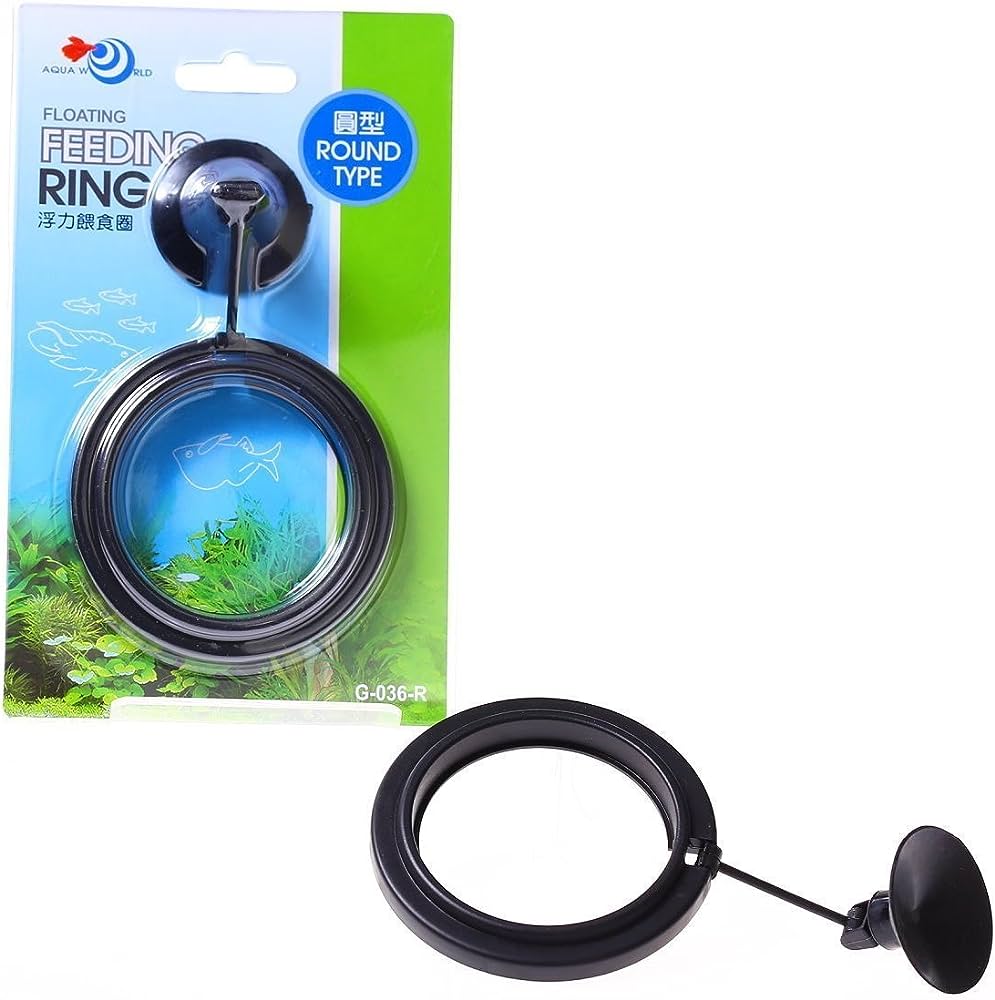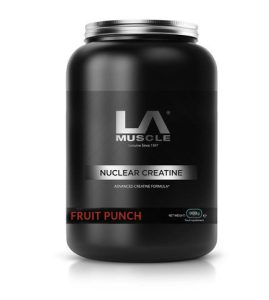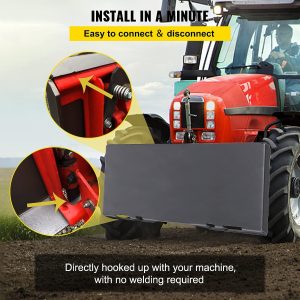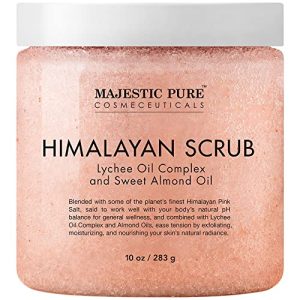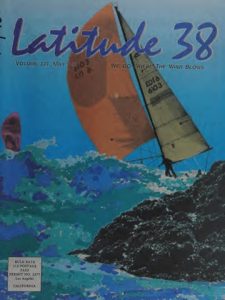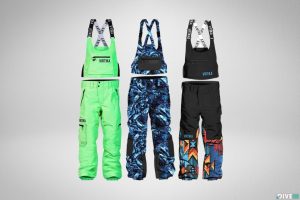Contents
- Benefits of Using Feeder Rings
- Factors to Consider When Choosing a Feeder Ring
- Different Types of Feeder Rings
- How to Properly Use a Feeder Ring
- Common Issues with Feeder Rings
- Tips for Maintaining Feeder Rings
- Recommended Feeder Rings for Specific Fish Species
- Feeder Rings DIY: Creating Your Own
- Cost and Availability of Feeder Rings
- Conclusion
In need of a practical and efficient solution to feed your fish? Look no further! Discover the perfect feeder ring for your aquatic companions. This innovative device is designed to keep your fish food contained in a secure and accessible manner. Say goodbye to wasted food and messy tanks. With the feeder ring, you can ensure that your fish receive their daily nourishment without any hassle. Revolutionize your fish-feeding routine today with this game-changing product!
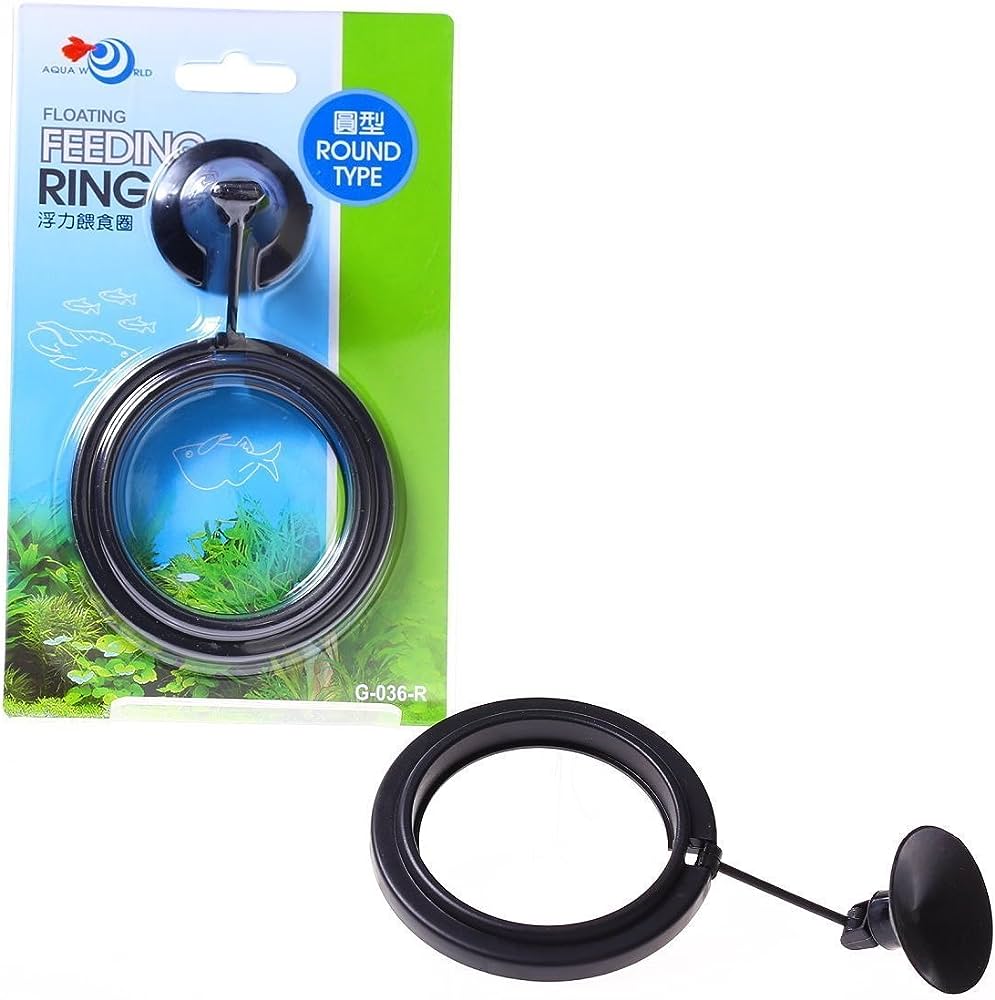
Benefits of Using Feeder Rings
Reduced Waste
Using feeder rings can greatly reduce waste in your fish tank or pond. By confining the food to a specific area, it prevents excess food from floating around and going uneaten. This is especially important for larger tanks or ponds, where it can be difficult for fish to locate and consume all the food in a timely manner. With a feeder ring, you can ensure that every bit of food is within reach of your fish, minimizing waste and keeping your tank or pond clean.
Promotes Natural Foraging
Feeder rings encourage natural foraging behavior in fish, as they have to actively search for and consume the food within the ring. This mimics the way fish would forage for food in the wild, enhancing their mental and physical stimulation. Natural foraging also helps to prevent boredom and aggression among fish, creating a healthier and more balanced environment for your aquatic pets.
Prevents Overfeeding
Overfeeding is a common problem among fish owners, and it can have serious consequences for the health of your fish. Feeder rings provide a controlled feeding environment that prevents overfeeding. By placing the appropriate amount of food within the ring, you can ensure that your fish consume just the right amount of food without excessive intake. This helps to maintain the nutritional balance and overall health of your fish.
Minimizes Food Aggression
In a community tank or pond, food aggression can be a significant issue. Feeder rings can help minimize food aggression by ensuring that each fish has equal access to food. With the food contained within the ring, fish have the opportunity to feed at their own pace without being intimidated or bullied by more dominant fish. This creates a more harmonious feeding environment and reduces stress among your fish.
Reduces Water Pollution
When fish food is scattered throughout the tank or pond, it can quickly decompose and pollute the water. Excess food can lead to poor water quality, increased ammonia levels, and the growth of harmful bacteria. Feeder rings prevent food from spreading and decaying, keeping the water cleaner and healthier for your fish. This can greatly improve the overall ecosystem of your tank or pond and contribute to the well-being of your aquatic pets.
Factors to Consider When Choosing a Feeder Ring
Ring Size
The size of the feeder ring is an important factor to consider when choosing one for your fish. It should be large enough to accommodate all of your fish comfortably while ensuring that the food stays within the ring. If the ring is too small, larger fish may have difficulty reaching the food, leading to uneven feeding. On the other hand, if the ring is too big, it may encourage waste and make it easier for food to escape. Consider the size and number of your fish to determine the appropriate feeder ring size for your tank or pond.
Buoyancy
The buoyancy of a feeder ring determines how it floats in the water. Some feeder rings float on the surface, while others sink to the bottom or remain at a certain depth. The type of fish you have and their feeding habits will dictate which buoyancy is most suitable for your tank or pond. Surface-floating feeder rings are often preferred for fish that primarily feed at the top of the water, while sinking or adjustable feeder rings may be better for bottom-dwelling or mid-water feeder species.
Durability and Material
Choose a feeder ring that is made of durable and non-toxic materials. Feeder rings made of high-quality plastics or stainless steel are often the best options as they are resistant to water damage, easy to clean, and long-lasting. Avoid feeder rings made of materials that may deteriorate or leach harmful substances into the water over time. Durability is especially important if you have larger or more active fish that may accidentally damage the feeder ring during feeding.
Compatibility with Fish Species
Different fish species have different feeding habits and preferences. Some fish may prefer to feed at the surface, while others are bottom-dwellers or mid-water feeders. Consider the specific needs of your fish species when choosing a feeder ring. Look for models that are specifically designed for the type of fish you have to ensure optimal feeding and minimize potential issues.
Ease of Use and Maintenance
A feeder ring should be easy to use and maintain, allowing for convenient feeding sessions and hassle-free cleaning. Look for feeder rings that are easy to assemble and disassemble, as well as those that are dishwasher-safe or can be easily rinsed and wiped clean. A feeder ring that is simple to adjust, refill, and store will make your fish-keeping experience more enjoyable and efficient.
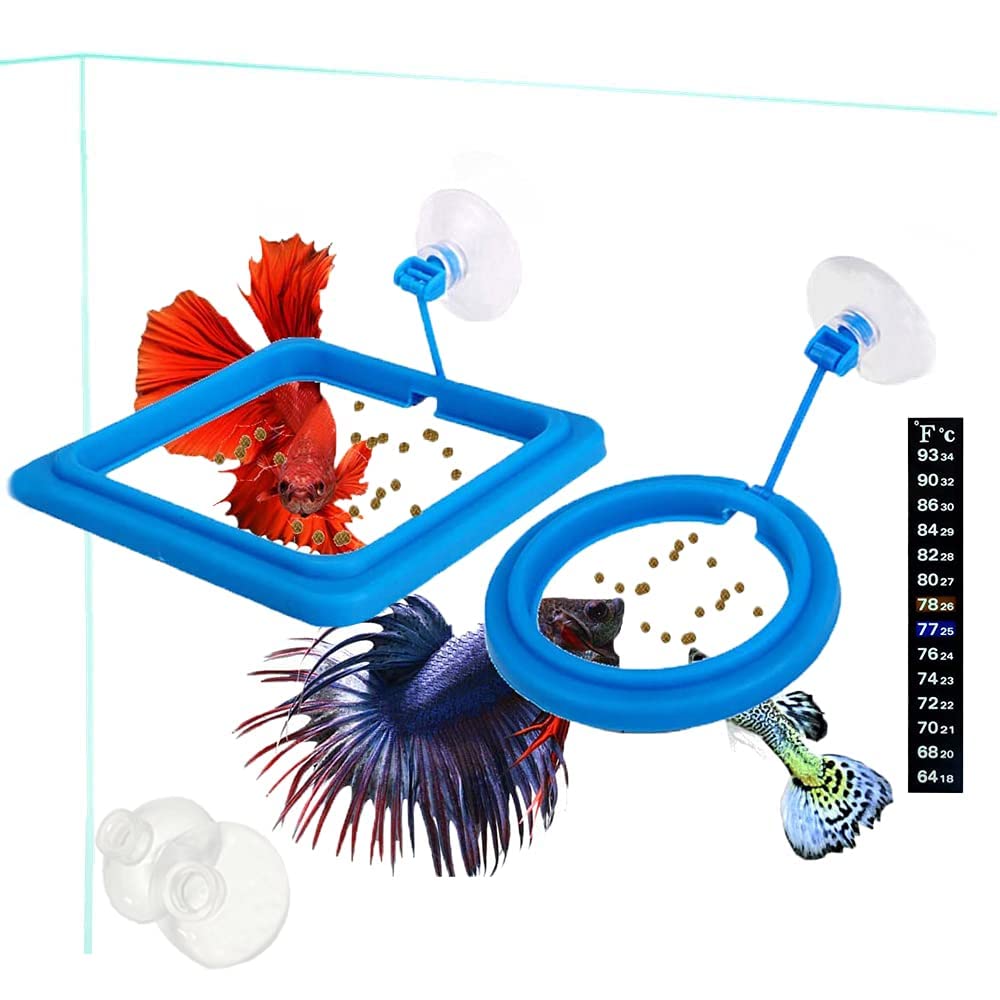
Different Types of Feeder Rings
Floating Feeder Rings
Floating feeder rings are designed to float on the surface of the water, keeping the food within reach of fish that primarily feed at the top. They are typically made of buoyant materials such as foam or plastic and usually have an adjustable diameter to accommodate different quantities of food. Floating feeder rings are suitable for surface-feeding species like betta fish, guppies, and many tropical freshwater fish.
Suction Cup Feeder Rings
Suction cup feeder rings are attached to the walls of the tank or pond using suction cups. They can be adjusted to different depths or positions, allowing for targeted feeding in specific areas. Suction cup feeder rings are ideal for mid-water or bottom-dwelling feeder fish that prefer to feed close to the walls or in specific areas of the tank. They are commonly used for species such as catfish, loaches, and some cichlids.
Weighted Feeder Rings
Weighted feeder rings sink to the bottom of the tank or pond, keeping the food contained within a designated feeding area. They are typically made of non-toxic materials such as lead or stainless steel and have adjustable heights to accommodate different water depths. Weighted feeder rings are suitable for bottom-dwelling fish species like plecos, loaches, and some types of cichlids.
Adjustable Feeder Rings
Adjustable feeder rings offer the flexibility to adapt to different water depths and fish sizes. They are often equipped with adjustable legs or mechanisms that allow you to change the height and diameter of the ring. Adjustable feeder rings can be used for various species and are particularly useful if you have a diverse community of fish with different feeding habits and preferences.
Cone-shaped Feeder Rings
Cone-shaped feeder rings have a narrow top and a wider bottom, resembling a cone or funnel. They are designed to prevent food from escaping and keep it concentrated in the center. The cone shape also helps to minimize waste and reduce the chances of fish missing out on the food. Cone-shaped feeder rings are suitable for a wide range of fish species, but they are especially popular among cichlid keepers.
How to Properly Use a Feeder Ring
Select an Ideal Feeding Spot
Before using a feeder ring, it is important to choose an ideal feeding spot in your tank or pond. Consider the natural behavior and preferences of your fish species when selecting the location. You may want to choose an area that is easily accessible to all fish and provides enough space for them to gather around the feeder ring.
Adjust the Feeder Ring Size
Adjust the size of the feeder ring based on the quantity of food you intend to feed and the number of fish present. If you are unsure, it is better to start with a smaller size and make adjustments as needed. The ring should be large enough for the fish to enter comfortably but not too spacious that the food can easily escape. Most feeder rings have adjustable settings, so you can easily customize the size to suit your specific needs.
Place the Food inside the Ring
Once you have adjusted the feeder ring to the desired size, carefully place the designated amount of food inside the ring. It is important not to overfill the ring to avoid wastage or make it difficult for fish to reach the food. You can use fish pellets, flakes, or other suitable food forms depending on the dietary requirements of your fish species.
Observe Fish Feeding Behavior
After placing the food in the feeder ring, observe the feeding behavior of your fish. Pay attention to any signs of aggression or competition among the fish. If you notice any issues, such as fish fighting over the food or one fish being excluded, you may need to make adjustments to the feeding arrangements or consider using multiple feeder rings to provide equal access to food.
Remove Any Uneaten Food
After the feeding session, be sure to remove any uneaten food from the tank or pond. Leaving uneaten food behind can lead to water pollution and negatively impact the health of your fish. Use a net or siphon to safely remove the excess food without disturbing the fish or the environment. Regularly removing uneaten food will help to keep the water clean and maintain a healthy ecosystem.
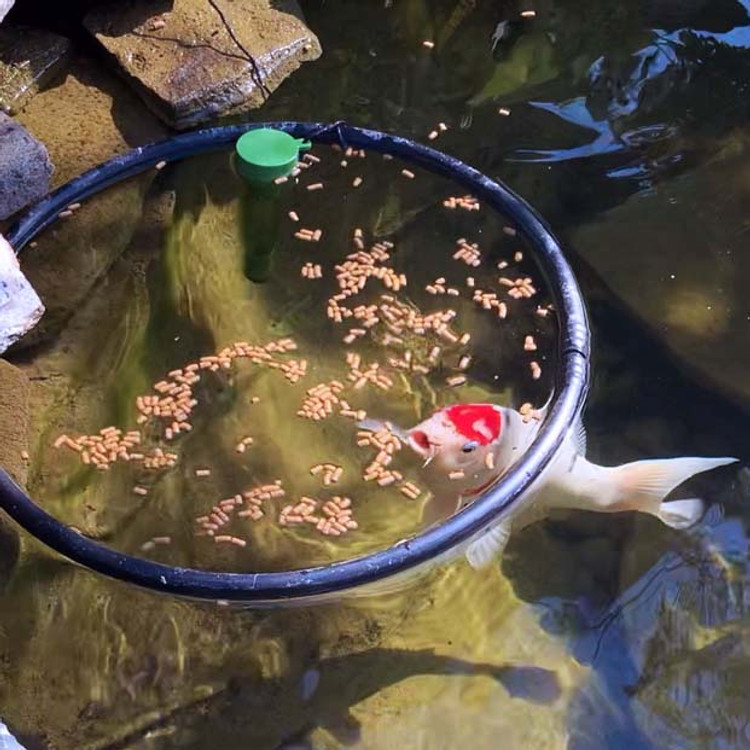
Common Issues with Feeder Rings
Food Escaping the Ring
Sometimes, food may escape from the feeder ring, especially if the ring is not properly adjusted or if the fish are particularly active during feeding. To minimize food escaping, ensure that the ring is set at an appropriate size where the food cannot easily be pushed out. Additionally, using a cone-shaped or weighted feeder ring can help contain the food more effectively and prevent it from scattering.
Ring Floating Upwards
If the feeder ring you are using is floating upwards, it is likely due to an issue with buoyancy. Check to see if the ring is properly balanced and not too top-heavy. Some feeder rings have adjustable buoyancy settings that allow you to control the depth at which the ring floats, while others may require additional weights to keep them in place. Experiment with different adjustments until you find the optimal buoyancy for your feeder ring.
Fish Ignoring the Ring
In some cases, fish may ignore the feeder ring and swim away without consuming the food. This could be due to various reasons, such as the fish being unfamiliar with the feeder ring or having a preference for a different feeding method. To encourage fish to use the feeder ring, you can try placing some food outside the ring initially to attract their attention. Gradually move the food closer to the ring until the fish are comfortable feeding from within it.
Difficulties with Cleaning
Feeder rings can accumulate debris and food residue over time, making them difficult to clean. Look for feeder rings that are easy to disassemble and clean, preferably dishwasher-safe or with smooth surfaces that can be easily rinsed or wiped clean. Regular cleaning is essential to prevent the buildup of bacteria and ensure the hygiene of the feeding environment.
Ring Getting Damaged
Feeder rings, especially those made of plastic, can get damaged over time, particularly if you have more aggressive or larger fish. Inspect your feeder ring regularly for any signs of wear and tear or damage. If you notice any cracks, breakages, or sharp edges, it is important to replace the feeder ring to prevent injuries to your fish or the escape of food.
Tips for Maintaining Feeder Rings
Regular Cleaning
To keep your feeder rings in optimal condition and prevent any health issues, it is important to clean them regularly. Follow the manufacturer’s instructions for cleaning or use mild dish soap and warm water to ensure thorough cleaning. Rinse the feeder ring well and allow it to dry before reuse. Regular cleaning will help maintain the hygiene of the feeding area and prevent the accumulation of bacteria.
Using High-Quality Food
The type of food you use in the feeder ring can have a significant impact on the health of your fish. Choose high-quality fish food that is specifically formulated for your fish species. Avoid low-quality or expired food, as they may not provide the necessary nutrients and can be detrimental to your fish’s health. High-quality food will also reduce the risk of water pollution and promote better digestion.
Adjusting Feeding Schedule
Feeding schedules vary depending on the fish species, their age, and their dietary needs. It is important to establish a regular feeding schedule and stick to it. Overfeeding can lead to obesity, poor water quality, and health issues, while underfeeding can result in malnutrition and weakened immune systems. Observe your fish’s feeding behavior and adjust the feeding schedule accordingly to ensure they receive the appropriate amount of food.
Inspecting and Replacing Damaged Rings
Regularly inspect your feeder rings for any signs of damage or wear. Damaged feeder rings may not effectively contain the food or could pose risks to your fish. If you notice any cracks, breakages, or sharp edges, replace the feeder ring with a new one. It is better to invest in a sturdy and durable feeder ring that will last longer and provide a safe feeding environment for your fish.
Monitoring Fish Health and Behavior
Feeding behavior can be an indicator of your fish’s overall health. Monitor your fish for any changes in appetite, weight, or behavior during feeding. Changes in feeding patterns, such as fish refusing to eat or excessive aggression during feeding, could be signs of underlying health issues. Regularly observing and assessing your fish’s health and behavior will allow you to address any potential problems promptly and provide appropriate care.
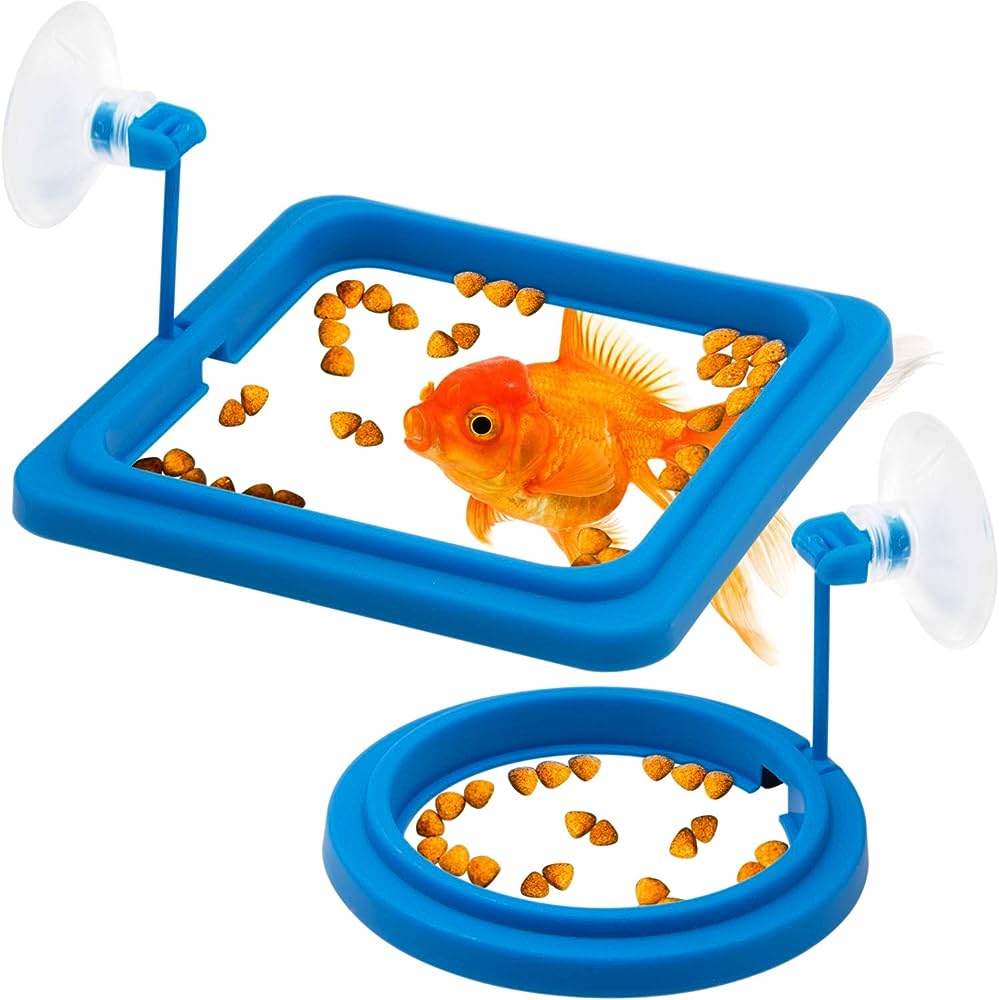
Recommended Feeder Rings for Specific Fish Species
Tropical Freshwater Fish
For tropical freshwater fish, a floating feeder ring is usually the most suitable option. Look for a ring that can be easily adjusted to different sizes and has a stable floating mechanism. Floating rings with adjustable legs or buoyancy settings offer the flexibility to cater to various fish sizes and water conditions. Some popular options for tropical freshwater fish include the Zoo Med Floating Aquatic Turtle Feeder and the Penn Plax Daily Fish Feeder.
Marine Fish
Marine fish require a feeder ring that can withstand saltwater conditions and float reliably on the surface. Look for feeder rings made of corrosion-resistant materials such as stainless steel or specially treated plastics. Adjustable buoyancy is important, as it allows you to set the ring at the right depth for your specific marine fish species. The Tunze Fish Feeder and the Current USA Eflux Fish Feeder are excellent choices for marine aquariums.
Goldfish
Goldfish are known for their tendency to generate a lot of waste during feeding. A weighted feeder ring is recommended for goldfish to prevent the food from scattering and to ensure that they can reach it easily. Look for a sturdy feeder ring with adjustable height and a wide base to accommodate larger goldfish. The EHEIM Everyday Fish Feeder and the Fish Mate P7000 Pond Fish Feeder are popular choices for feeding goldfish.
Cichlids
Cichlids can be quite aggressive during feeding, so it is essential to choose a feeder ring that can withstand their territorial behavior. Cone-shaped feeder rings are often highly effective in containing the food and reducing aggression among cichlids. Look for sturdy, cone-shaped feeder rings made of durable materials such as stainless steel or hard plastic. The Laifoo Aquarium Fish Feeder Ring and the POPETPOP Fish Feeding Ring are excellent options for cichlid tanks.
Pond Fish
Pond fish often require larger feeder rings to accommodate their size and quantity. Weighted feeder rings are commonly used in ponds to prevent the food from drifting away and ensure easy access for the fish. Look for feeder rings specifically designed for pond use, with adjustable height and durable materials. The Oase Pontec Pondomatic Pond Vacuum Cleaner and the DuraPond Floating Fish Feeder Ring are reliable choices for feeding pond fish.
Feeder Rings DIY: Creating Your Own
Materials and Tools Needed
Creating your own feeder ring can be a cost-effective and fun DIY project. To make your own feeder ring, you will need the following materials and tools:
- Plastic piping or tubing (flexible and non-toxic)
- End caps or plugs for the tubing
- Zip ties or fishing line
- Scissors or a saw for cutting the tubing
- Measuring tape or ruler to determine the desired size
- Sandpaper or a file to smooth the edges
Step-by-Step Instructions
- Measure and cut the plastic piping or tubing to the desired length for your feeder ring. The length will depend on the size of your tank or pond and the number of fish you have.
- Smooth the edges of the cut tubing with sandpaper or a file to avoid any sharp or rough areas that could harm your fish.
- Attach the end caps or plugs to each end of the tubing. Make sure they are securely fastened to prevent any leaks or food escape.
- Determine the appropriate size of the feeder ring by laying the tubing in the desired shape in your tank or pond. Adjust the size as needed by trimming the tubing or adding additional sections.
- Once you have the correct size, fasten the ends of the tubing together using zip ties or fishing line. Make sure the tubing is securely connected and won’t come apart during use.
- Adjust the position and floating level of the feeder ring in your tank or pond to ensure optimal feeding accessibility for your fish.
- Test the feeder ring by placing food inside and observing the fish’s feeding behavior. Make any necessary adjustments to the size or position of the feeder ring until it is working effectively.
Safety Considerations
When creating your own feeder ring, it is important to prioritize the safety of your fish. Use materials that are non-toxic and safe for aquatic environments. Avoid using materials that may leach harmful substances into the water or cause any potential harm to your fish. Smooth the edges of the feeder ring tubing to prevent any injuries to your fish while they are feeding. Regularly inspect the homemade feeder ring for any signs of wear and replace it if any damage occurs.
Alternative DIY Feeding Devices
If creating a feeder ring seems too complicated or time-consuming, there are alternative DIY feeding devices you can make. For example, you can repurpose a plastic container (such as a clean and rinsed yogurt or margarine container) by cutting a hole in the lid and placing it on the water’s surface. This creates a floating platform that can keep the food contained while allowing your fish to access it. Ensure that the container is securely fastened and won’t pose any safety risks to your fish.
Examples and Inspiration
If you need further inspiration or ideas for DIY feeder rings, you can find a variety of video tutorials and forums online dedicated to fish-keeping enthusiasts. These resources often showcase creative and effective feeder ring designs made by fellow hobbyists. Remember to adapt any DIY designs to suit your specific needs and fish species, ensuring the safety and well-being of your aquatic pets.
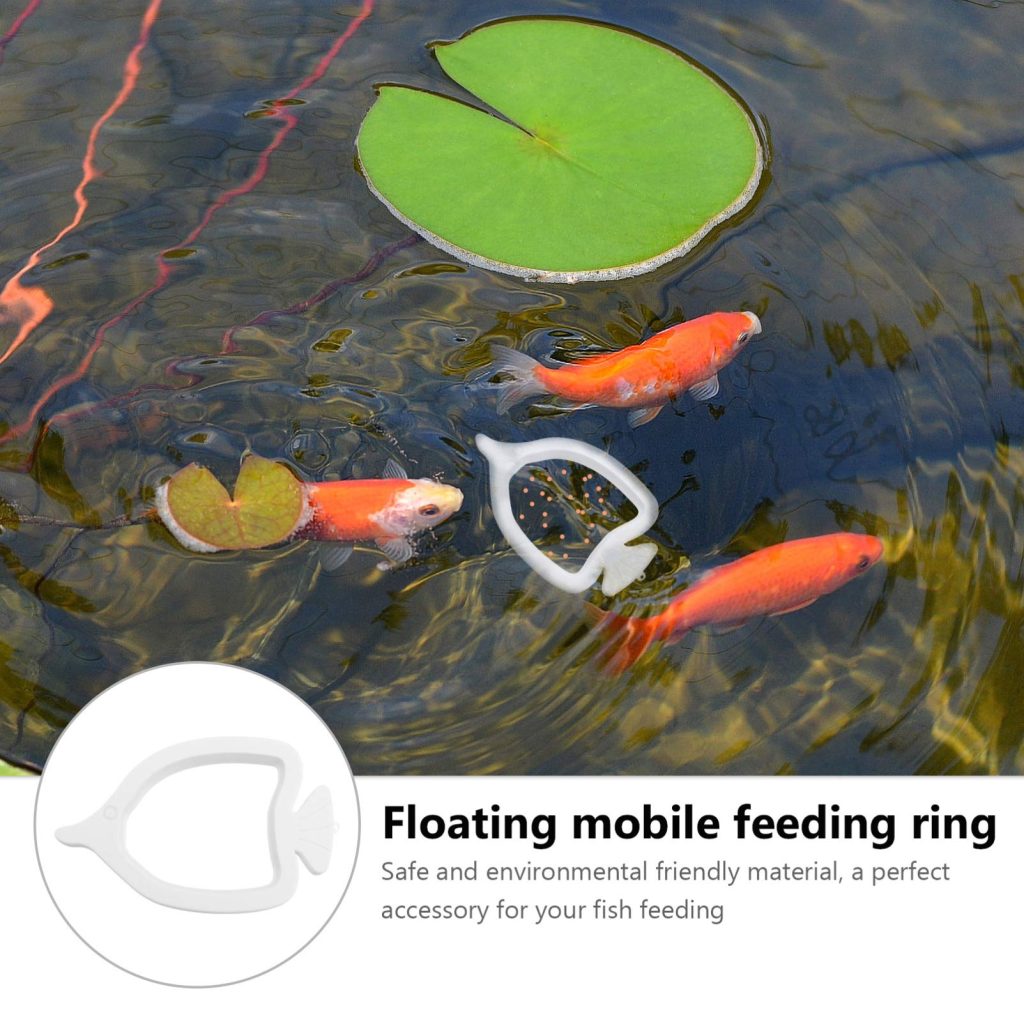
Cost and Availability of Feeder Rings
Price Range
The cost of feeder rings can vary depending on their size, material, and brand. Typically, feeder rings range from $5 to $30, with basic models on the lower end of the price range and more advanced or specialized ones on the higher end. Consider your budget, the specific needs of your fish, and the features you require when selecting a feeder ring. Remember that investing in a high-quality feeder ring will provide long-term benefits and durability.
Online Retailers
Feeder rings are readily available from numerous online retailers that specialize in fish supplies. Major online marketplaces such as Amazon, Chewy, and Petco offer a wide selection of feeder rings from various brands and manufacturers. These platforms often provide detailed product descriptions, customer reviews, and ratings to help you make an informed decision about your purchase.
Local Pet Stores
Local pet stores that focus on fish and aquarium supplies are also great places to find feeder rings. Staff members at these stores are usually knowledgeable and can provide guidance on choosing the right feeder ring for your fish species and tank or pond setup. Local pet stores may carry a smaller range of feeder rings compared to online retailers, but they often stock popular and reliable options.
Product Availability
Feeder rings are generally readily available and can be found in most pet stores that sell fish supplies. However, the specific models and brands available may vary depending on your location and the size of the store. If you are looking for a particular feeder ring or a more specialized option, it may be more convenient to shop online as it offers a wider selection and the ability to compare different products.
Conclusion
Feeder rings provide numerous benefits for fish owners, including reduced waste, natural foraging behavior, prevention of overfeeding, minimization of food aggression, and reduction of water pollution. Choosing the right feeder ring involves considering factors such as ring size, buoyancy, material, compatibility with fish species, and ease of use and maintenance. Different types of feeder rings, such as floating, suction cup, weighted, adjustable, and cone-shaped, cater to various fish species and their feeding habits. Proper usage of feeder rings includes selecting an ideal feeding spot, adjusting the ring size, placing the food inside the ring, observing fish feeding behavior, and removing any uneaten food. Common issues with feeder rings can be resolved through appropriate adjustments and regular maintenance. Maintaining feeder rings involves regular cleaning, using high-quality food, adjusting the feeding schedule, inspecting and replacing damaged rings, and monitoring fish health and behavior. Certain feeder rings are recommended for specific fish species, and creating your own DIY feeder ring can be a cost-effective option. Feeder rings are available at various prices through online retailers and local pet stores, providing convenience and accessibility. By considering the benefits, factors, types, usage, issues, maintenance, recommendations, DIY options, and cost and availability of feeder rings, you are able to make an informed decision and provide the perfect feeding solution for your fish.

